Daniel Rayson in Nautilus:
 It is not uncommon that I lie about what I do for a living. When meeting strangers, basic introductions quickly turn into conversational quicksand for me. Whether posed for identification, categorization, assessment of social status, or to fill an empty conversation, inquiries about work are difficult to avoid. I know that such questions are innocent attempts to situate me somewhere in the atmosphere; we use the occupational compass to direct us toward an identifiable point in each other’s lives. I know this, and yet the job question, when it comes, often has me squirming for answers. My eyes dart away from the pair in front of me expecting a straightforward reply.
It is not uncommon that I lie about what I do for a living. When meeting strangers, basic introductions quickly turn into conversational quicksand for me. Whether posed for identification, categorization, assessment of social status, or to fill an empty conversation, inquiries about work are difficult to avoid. I know that such questions are innocent attempts to situate me somewhere in the atmosphere; we use the occupational compass to direct us toward an identifiable point in each other’s lives. I know this, and yet the job question, when it comes, often has me squirming for answers. My eyes dart away from the pair in front of me expecting a straightforward reply.
The question triggers a peculiar type of “flight or fight response,” as if the topic of what I do for a living poses a personal threat. Most of the time I dodge the issue or flee entirely. At other times, I will stay and face the question in the easiest way possible, avoiding the pitfall of pretending to be an accountant in front of the local manager of H&R Block. First, I say I’m a doctor. In response to the inevitable question, “What kind …?” I’ll sometimes blankly respond, “Oh, a general practitioner—a family doctor …” After all, I was one of those once, so it’s not really a bold-faced lie. I know about triaging colds and flu, about vaccinating kids and monitoring benign conditions. I know about diagnostic skills at risk of becoming blunted by seeing so many “walking well” and about desperately hoping not to miss a serious illness cloaked in a veneer of nonspecific anxieties and nondescript sensations and pains. But, in truth, I am no longer one of those.
When I don’t escape or lie—there is no way to predetermine when the urge for honesty will suddenly strike—I answer, “I’m a cancer specialist,” and then feel the immediate lurch to the edge of a conversational cliff. This answer can be as shocking to my conversation partner as when I passingly ask someone, “How’s it going,” expecting a bland “not bad,” but instead have to respond to, “Oh just horrible—this has been one of the worst weeks of my life.” A momentarily stunned, uncomfortable silence follows. Responses to my profession confession vary and often include vignettes of how the person has been touched by cancer in the present or past, whether through the closest of loved ones or the most distant of acquaintances. When no such vignette is forthcoming, the conversation often turns to “how close ‘they’ are to a cure” or to imaginative hypotheses surrounding etiologies and best preventive methods. The possible collusion of industry and government in preventing the dissemination of a simple, natural cure also comes up commonly. Inevitably, there is a tinge of disbelief: Most people know someone who has been impacted by a malignancy, but have never met someone who deals with the onslaught of disease and despair day in and day out.
More here.
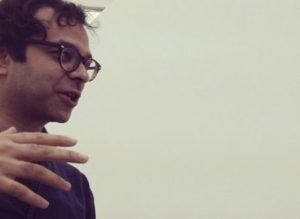 Asad Raza: In 2015, Nicola Lees invited me to do something for the Ljubljana Biennial, and I had a thought of the school, especially experimental pedagogy, as an interesting thing. I asked Jeff and Graham to collaborate on this, as they probably know the subject much, much better than I do. But I was interested in making some formal conditions, let’s say, under which an experimental school could flourish inside an exhibition. I think of these as sketches for an institution that would be up to the 21st century somehow, a multivalent cultural institution that could do exhibitions, that would have education, but the education wouldn’t function in the way that education departments do right now, you know?
Asad Raza: In 2015, Nicola Lees invited me to do something for the Ljubljana Biennial, and I had a thought of the school, especially experimental pedagogy, as an interesting thing. I asked Jeff and Graham to collaborate on this, as they probably know the subject much, much better than I do. But I was interested in making some formal conditions, let’s say, under which an experimental school could flourish inside an exhibition. I think of these as sketches for an institution that would be up to the 21st century somehow, a multivalent cultural institution that could do exhibitions, that would have education, but the education wouldn’t function in the way that education departments do right now, you know?
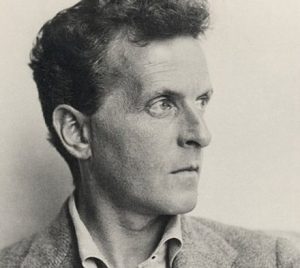 If you bring together two enigmas, do you get a bigger enigma, or do they cancel each other out, like multiplied negative numbers, to produce clarity? The latter, I hope, as I take on Wittgenstein and mysticism.
If you bring together two enigmas, do you get a bigger enigma, or do they cancel each other out, like multiplied negative numbers, to produce clarity? The latter, I hope, as I take on Wittgenstein and mysticism.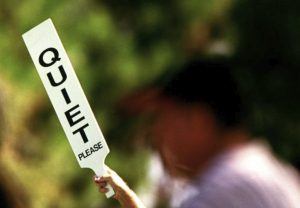 As misinformation weapons go, fake news is sort of like a cannon: noisy and provocative. Innuendo is like a dirty bomb — invisible, toxic and lingering. I became more aware of the misleading uses of innuendo after I spoke with linguistics professor Andrew Kehler during the run-up to the 2016 election.
As misinformation weapons go, fake news is sort of like a cannon: noisy and provocative. Innuendo is like a dirty bomb — invisible, toxic and lingering. I became more aware of the misleading uses of innuendo after I spoke with linguistics professor Andrew Kehler during the run-up to the 2016 election.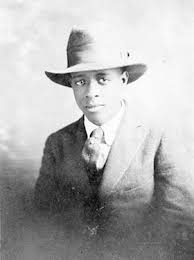 After graduation, Thurman settled in Harlem in the 1920s and became a leading (and legendary) figure in the Harlem Renaissance—part of the “niggerati,” as Zora Neale Hurston famously called this influential group of intellectuals and artists. Working with A. Philip Randolph, Thurman became an editor at The Messenger, a political and literary journal, and in 1926 he co-founded, with Hurston, Hughes, Aaron Douglas, Gwendolyn Bennett, and Bruce Nugent, a bold and innovative publication called Fire!!, which featured the work of younger artists but was disliked by the black middle class because of its candid presentation of black life. In 1929, Thurman collaborated with the white playwright William Jourdan Rapp to write and produce Harlem, which ran for 93 performances and became “the first successful play written entirely or in part by a Negro to appear on Broadway.” Thurman believed that African Americans could overcome racial barriers, but he experienced countless incidents of racism during his short life.
After graduation, Thurman settled in Harlem in the 1920s and became a leading (and legendary) figure in the Harlem Renaissance—part of the “niggerati,” as Zora Neale Hurston famously called this influential group of intellectuals and artists. Working with A. Philip Randolph, Thurman became an editor at The Messenger, a political and literary journal, and in 1926 he co-founded, with Hurston, Hughes, Aaron Douglas, Gwendolyn Bennett, and Bruce Nugent, a bold and innovative publication called Fire!!, which featured the work of younger artists but was disliked by the black middle class because of its candid presentation of black life. In 1929, Thurman collaborated with the white playwright William Jourdan Rapp to write and produce Harlem, which ran for 93 performances and became “the first successful play written entirely or in part by a Negro to appear on Broadway.” Thurman believed that African Americans could overcome racial barriers, but he experienced countless incidents of racism during his short life.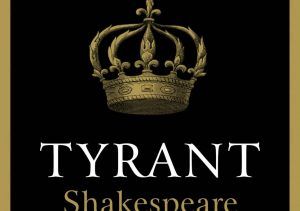 What would
What would 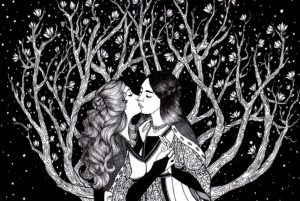 Refashioning history to include its countless heroines is essential work, long overdue. But what of the future? Will these books, as the introduction to Herstory implores, truly encourage young girls to “take inspiration from these . . . amazing women and girls and shake things up!”? Perhaps. Last year, Science magazine published research investigating the age at which girls begin to think that they are less intellectually brilliant than boys. The study involved reading two stories to children between the ages of five and seven. One, they explained, was about a “really, really smart” person; the other, a “really, really nice” one. Afterwards, the children were asked which was about a girl, and which about a boy. At five, the boys were sure the “really, really smart” character was a boy, the girls equally adamant it was a girl. By six, however, something had changed. In the space of twelve months, the girls had become 20 per cent less likely to think that a clever character could share their gender. According to Dario Cvencek, a research scientist at the University of Washington, the results would be more depressing still had the hero of the book been a mathematician. Children absorb the gender prejudices on display in their environments and reading matter from the age of around five, he says – especially the idea that girls don’t do numbers. The stereotypes portrayed in their reading material become their own stereotypes and, worse still, the limits of their ambitions. The most powerful way to combat this, as the psychologist Nilanjana Dasgupta has found, is through providing successful female role models to small girls before the disease sets in, as a form of “stereotype inoculation”.
Refashioning history to include its countless heroines is essential work, long overdue. But what of the future? Will these books, as the introduction to Herstory implores, truly encourage young girls to “take inspiration from these . . . amazing women and girls and shake things up!”? Perhaps. Last year, Science magazine published research investigating the age at which girls begin to think that they are less intellectually brilliant than boys. The study involved reading two stories to children between the ages of five and seven. One, they explained, was about a “really, really smart” person; the other, a “really, really nice” one. Afterwards, the children were asked which was about a girl, and which about a boy. At five, the boys were sure the “really, really smart” character was a boy, the girls equally adamant it was a girl. By six, however, something had changed. In the space of twelve months, the girls had become 20 per cent less likely to think that a clever character could share their gender. According to Dario Cvencek, a research scientist at the University of Washington, the results would be more depressing still had the hero of the book been a mathematician. Children absorb the gender prejudices on display in their environments and reading matter from the age of around five, he says – especially the idea that girls don’t do numbers. The stereotypes portrayed in their reading material become their own stereotypes and, worse still, the limits of their ambitions. The most powerful way to combat this, as the psychologist Nilanjana Dasgupta has found, is through providing successful female role models to small girls before the disease sets in, as a form of “stereotype inoculation”.
 It is not uncommon that I lie about what I do for a living. When meeting strangers, basic introductions quickly turn into conversational quicksand for me. Whether posed for identification, categorization, assessment of social status, or to fill an empty conversation, inquiries about work are difficult to avoid. I know that such questions are innocent attempts to situate me somewhere in the atmosphere; we use the occupational compass to direct us toward an identifiable point in each other’s lives. I know this, and yet the job question, when it comes, often has me squirming for answers. My eyes dart away from the pair in front of me expecting a straightforward reply.
It is not uncommon that I lie about what I do for a living. When meeting strangers, basic introductions quickly turn into conversational quicksand for me. Whether posed for identification, categorization, assessment of social status, or to fill an empty conversation, inquiries about work are difficult to avoid. I know that such questions are innocent attempts to situate me somewhere in the atmosphere; we use the occupational compass to direct us toward an identifiable point in each other’s lives. I know this, and yet the job question, when it comes, often has me squirming for answers. My eyes dart away from the pair in front of me expecting a straightforward reply. A few months into a cushy postdoctoral fellowship at Princeton, where the walls were a soothing yellow and poached salmon was a staple, it dawned on me that I could reasonably be considered an arsehole. This wasn’t the first time the thought had occurred to me: after all, I am the kind of Brit who insists on the difference between a donkey, otherwise known as an ass, and a backside, otherwise known as an arse. But on this occasion my reflection was prompted not by looking in the mirror or by hearing a recording of my voice but by the experience of being a philosopher in a non-philosophical setting. Calling yourself a philosopher already makes you sound a bit of an arse, but the fact remains that I have spent most of my professional life studying, discussing, writing and teaching philosophy—and it is this, I submit, that has made me liable to appear a right royal arsehole.
A few months into a cushy postdoctoral fellowship at Princeton, where the walls were a soothing yellow and poached salmon was a staple, it dawned on me that I could reasonably be considered an arsehole. This wasn’t the first time the thought had occurred to me: after all, I am the kind of Brit who insists on the difference between a donkey, otherwise known as an ass, and a backside, otherwise known as an arse. But on this occasion my reflection was prompted not by looking in the mirror or by hearing a recording of my voice but by the experience of being a philosopher in a non-philosophical setting. Calling yourself a philosopher already makes you sound a bit of an arse, but the fact remains that I have spent most of my professional life studying, discussing, writing and teaching philosophy—and it is this, I submit, that has made me liable to appear a right royal arsehole. Few subjects have afforded more room for doubt, or caused more harm through false certainty, than heredity. In She Has Her Mother’s Laugh, an illuminating survey of the concept through history, science writer Carl Zimmer shows that scientists have often clung to travesties of the truth — and that we are still in danger of doing so.
Few subjects have afforded more room for doubt, or caused more harm through false certainty, than heredity. In She Has Her Mother’s Laugh, an illuminating survey of the concept through history, science writer Carl Zimmer shows that scientists have often clung to travesties of the truth — and that we are still in danger of doing so. If you wanted to feel the full force of the intellectual whirlpool that is American politics in 2018, the place to go on April 2 was the Village Underground, a nightclub beneath West 3rd Street, where Alan Dershowitz, the longtime Harvard Law professor and civil liberties lion, was debating the future of American democracy on the side of President Donald Trump.
If you wanted to feel the full force of the intellectual whirlpool that is American politics in 2018, the place to go on April 2 was the Village Underground, a nightclub beneath West 3rd Street, where Alan Dershowitz, the longtime Harvard Law professor and civil liberties lion, was debating the future of American democracy on the side of President Donald Trump. Of course, I am happy for those I have never met. Prince Henry (Harry), who lost his mother at twelve—lost her to monarchy, and the occasionally murderous intrusions that now define it—found a woman to hold him and, I think, he laid his heart before her. She was touched by him—Harry is a lonely prince, a semi-mythical being—and she picked it up. It looked real. I hope it is real, even as I resent having an opinion on a stranger’s love. That this was televised in an event as emotionally grasping as the funeral that incited the very need we thought we saw sated on Saturday should be obvious, but it was not mentioned. It should be the final, impolite word on the royal wedding.
Of course, I am happy for those I have never met. Prince Henry (Harry), who lost his mother at twelve—lost her to monarchy, and the occasionally murderous intrusions that now define it—found a woman to hold him and, I think, he laid his heart before her. She was touched by him—Harry is a lonely prince, a semi-mythical being—and she picked it up. It looked real. I hope it is real, even as I resent having an opinion on a stranger’s love. That this was televised in an event as emotionally grasping as the funeral that incited the very need we thought we saw sated on Saturday should be obvious, but it was not mentioned. It should be the final, impolite word on the royal wedding. Read a few lines of a talented poet charged with God—from the otherworldly lines of Gerard Manley Hopkins on forward to Akbar himself—and you see what faith can do to language. There’s a lift. A particular lean. A curious mixture of confidence and humility. A strangeness borne of awe. Peter O’Leary’s book of criticism,
Read a few lines of a talented poet charged with God—from the otherworldly lines of Gerard Manley Hopkins on forward to Akbar himself—and you see what faith can do to language. There’s a lift. A particular lean. A curious mixture of confidence and humility. A strangeness borne of awe. Peter O’Leary’s book of criticism, 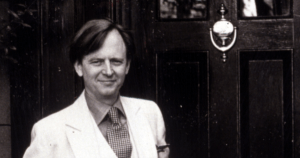 Wolfe’s preposterous clothing was a constant reminder of a core journalistic truth: to be an observer requires distance, and a writer’s alienation from his subject is not to be annihilated but managed and, most often, treasured. His was a much better pose. There are few worthwhile memoirs of the space program or the High (in at least two senses) Counterculture. But The Right Stuff and The Electric Kool-Aid Acid Test are as close to imperishable as journalism ever gets. In both cases, Wolfe examined a scene with a subjectivity and style exclusive to himself. He saw things as Tom Wolfe, with his own gift of studied by playful detachment.
Wolfe’s preposterous clothing was a constant reminder of a core journalistic truth: to be an observer requires distance, and a writer’s alienation from his subject is not to be annihilated but managed and, most often, treasured. His was a much better pose. There are few worthwhile memoirs of the space program or the High (in at least two senses) Counterculture. But The Right Stuff and The Electric Kool-Aid Acid Test are as close to imperishable as journalism ever gets. In both cases, Wolfe examined a scene with a subjectivity and style exclusive to himself. He saw things as Tom Wolfe, with his own gift of studied by playful detachment.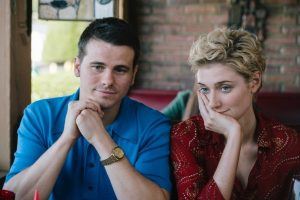 The Tale is one of the bravest and smartest movies I’ve ever seen. Writer-director Jennifer Fox dives into the sexual abuse she suffered as a teenager, and proceeds to interrogate her own memories with unflinching clarity. Furthermore, rather than simply stick to her background as a documentary filmmaker and try to tell her story in that medium, she wisely decides to make a narrative feature that gives her the tools to more effectively dive into both the abuse she suffered and the investigation to find the truth behind her own memories. With an outstanding cast, led by the incomparable Laura Dern, at her disposal, Fox weaves a captivating and gut-wrenching story about the lies told to us, and the lies we tell ourselves. Documentarian and professor Jennifer (Dern) comes home from working on a project to get a frantic series of voicemails from her mother Nettie (Ellen Burstyn). While cleaning out some boxes, Nettie discovered a story Jennifer wrote when she was thirteen recounting a romantic relationship she had with her running coach Bill (Jason Ritter) and riding instructor Mrs. G (Elizabeth Debicki). Although Jennifer acknowledges she had a relationship with an older man, it isn’t until she starts reading her own story closer that she starts to discover her own flawed assumptions, thinking she was more mature when pictures show a small, plain 13-year-old Jenny (Isabelle Nélisse). Rattled by how her memories may have betrayed her, Jennifer starts an investigation to uncover the truth behind her original story.
The Tale is one of the bravest and smartest movies I’ve ever seen. Writer-director Jennifer Fox dives into the sexual abuse she suffered as a teenager, and proceeds to interrogate her own memories with unflinching clarity. Furthermore, rather than simply stick to her background as a documentary filmmaker and try to tell her story in that medium, she wisely decides to make a narrative feature that gives her the tools to more effectively dive into both the abuse she suffered and the investigation to find the truth behind her own memories. With an outstanding cast, led by the incomparable Laura Dern, at her disposal, Fox weaves a captivating and gut-wrenching story about the lies told to us, and the lies we tell ourselves. Documentarian and professor Jennifer (Dern) comes home from working on a project to get a frantic series of voicemails from her mother Nettie (Ellen Burstyn). While cleaning out some boxes, Nettie discovered a story Jennifer wrote when she was thirteen recounting a romantic relationship she had with her running coach Bill (Jason Ritter) and riding instructor Mrs. G (Elizabeth Debicki). Although Jennifer acknowledges she had a relationship with an older man, it isn’t until she starts reading her own story closer that she starts to discover her own flawed assumptions, thinking she was more mature when pictures show a small, plain 13-year-old Jenny (Isabelle Nélisse). Rattled by how her memories may have betrayed her, Jennifer starts an investigation to uncover the truth behind her original story.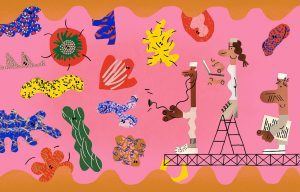 Bertrand Routy earned a lamentable reputation with Parisian oncologists in 2015. A doctoral student at the nearby Gustave Roussy cancer centre, Routy had to go from hospital to hospital collecting stool samples from people who had undergone cancer treatments. The doctors were merciless. “They made fun of me,” Routy says. “My nickname was Mr Caca.” But the taunting stopped after Routy and his colleagues published evidence that certain gut bacteria seem to boost people’s response to treatment
Bertrand Routy earned a lamentable reputation with Parisian oncologists in 2015. A doctoral student at the nearby Gustave Roussy cancer centre, Routy had to go from hospital to hospital collecting stool samples from people who had undergone cancer treatments. The doctors were merciless. “They made fun of me,” Routy says. “My nickname was Mr Caca.” But the taunting stopped after Routy and his colleagues published evidence that certain gut bacteria seem to boost people’s response to treatment